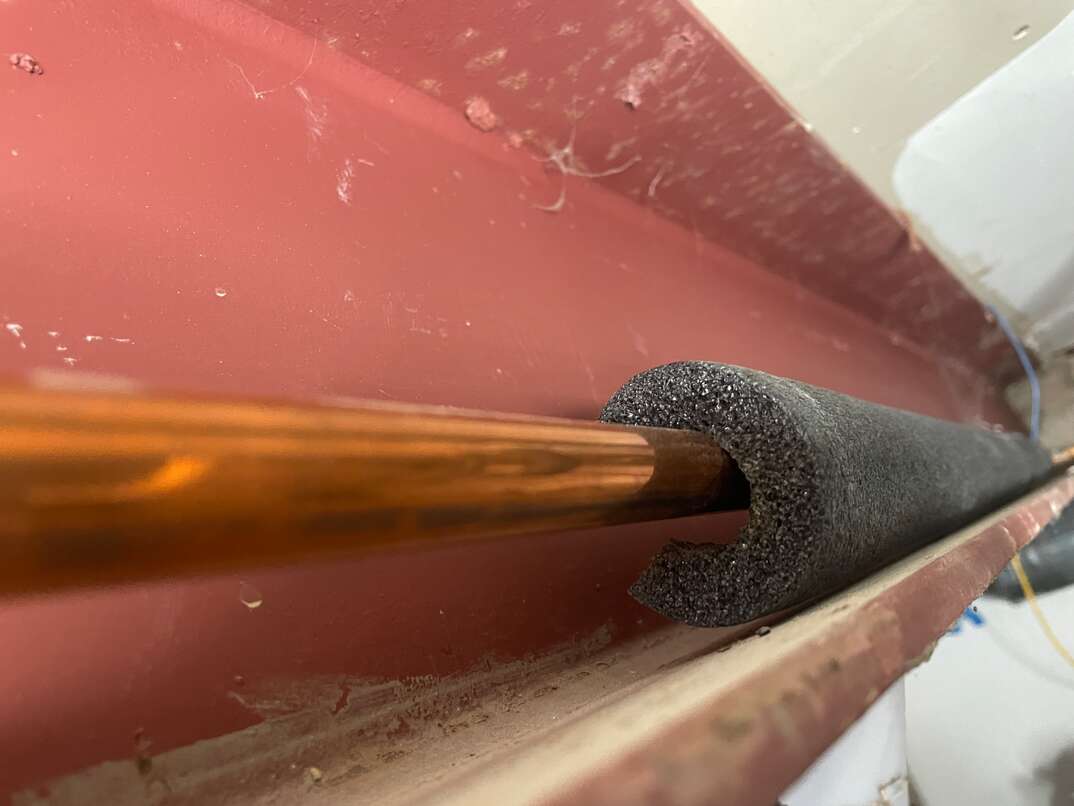Prevent Frozen Pipes This Winter With These 7 Tips

Frosty patterns on windows and icicles hanging outside might be beautiful, but you don't want freezing to happen inside your home. Frozen pipes can cause major damage to your plumbing system.
You might think you're fine as long as your furnace is running, but pipes can freeze even if your home feels warm. Find out why this winter phenomenon happens and how to keep pipes from freezing.
Why Do Water Pipes Freeze?
Frozen pipes happen when temperatures drop low enough for the water inside the plumbing lines to turn to ice. This can happen for a variety of reasons. If you shut your heat off while you're gone from home but leave your water on, the lines could freeze. Pipes that run through exterior walls or uninsulated and unheated areas can also freeze. That's especially true if your home has poor insulation and allows cold outdoor temperatures to pass into the walls.
Your pipes can freeze any time the temperature dips below 32 degrees Fahrenheit, which is the freezing point for water. While your pipes typically won't freeze until they reach 20 degrees for several hours, it's best to keep them as far away from freezing temps as possible.
What Are Some Ways To Prevent Freezing Pipes?
It's possible that some pipes will still freeze, especially ones in exterior walls with little insulation. However, you can take steps to reduce the risk and protect your home. Try these steps to prevent plumbing frozen pipes.
1. Keep Up Your HVAC System
A warm home reduces your risks of frozen pipes. Changing your air filter regularly and keeping up with annual furnace tune-ups can prevent complete breakdowns of your HVAC system. If you notice your furnace isn't working quite right, call an HVAC pro to find the problem and fix it before your heater stops working.
Keeping your furnace at the same temperature day and night and when you're home and away can also help. Dropping it lower to save energy could let some areas of your home get cold enough to cause frozen pipes.
2. Insulate Your Pipes
A layer of insulation on your pipes can add extra protection against cold temperatures. This option is easiest on your exposed pipes. You can buy foam insulation sleeves designed to slip easily over water pipes. Put them in place and tape them to hold them.
Heat tape or heat cable is another option for keeping pipes warm. These products apply gentle heat to the pipes to keep the water warm enough to prevent freezing. They're relatively easy to apply to exposed pipes.
3. Seal Up Your Home
Improving the exterior of your home can keep your pipes warmer. Look for gaps and cracks along your home's exterior. Sealing those points can keep cold air out of your home, leaving the pipes warmer. Adding insulation to your walls can also help keep the pipes warmer.
More Related Articles:
- Calling a Plumber? Here Are the 6 Most Common Plumbing Jobs and How Much They Cost
- 6 Ways to Try to Unclog Your Sink Before You Call a Plumber
- What's in My Plumber's Van?
- Here's How Much It Costs to Remodel a Bathroom
- 6 Tips for Hiring a Plumber
4. Put Hoses Away for the Winter
Exterior hoses that are left connected could cause frozen pipes. Water remaining in the hose and pipe can easily freeze due to its proximity to cold outdoor air. Removing the hose and draining the water from the pipe can prevent issues. You might also shut off the valve leading to your hose bibb for additional protection.
5. Keep Cabinets Open
On cold days, opening the cabinets below your sink could work as a last-ditch effort to prevent freezing. It allows more warm air from inside your home to reach that section of pipe. It could be enough to keep the water flowing.
6. Let a Stream of Water Run
Another tactic to use if you're concerned about imminent pipe freezing is to let a small trickle of water run through your pipes. By keeping the water moving, you reduce the risk of the water freezing inside the pipes. This option isn't a practical strategy all winter long, but it can work in a pinch if your heat goes out or the temperatures drop significantly.
7. Crank Your Heat
Record-breaking lows are a good excuse to crank your heat. Not only will you stay more comfy, but your pipes might also stay toasty. The temporary heating bill increase will be much more affordable than the cost of repairing burst pipes.
Effects of Frozen Pipes
If the water inside your pipes freezes, it expands and puts pressure on your plumbing. Major expansion can cause the pipes to burst. When the ice melts, the water pours out of the newly formed holes. Burst pipes can happen anywhere in your plumbing system, including inside your walls, which makes the leaks more difficult to find. A lot of water damage can happen in a short time when your pipes freeze.
Elocal Editorial Content is for educational and entertainment purposes only. Editorial Content should not be used as a substitute for advice from a licensed professional in your state reviewing your issue. Systems, equipment, issues and circumstances vary. Follow the manufacturer's safety precautions. The opinions, beliefs and viewpoints expressed by the eLocal Editorial Team and other third-party content providers do not necessarily reflect the opinions, beliefs and viewpoints of eLocal or its affiliate companies. Use of the Blog is subject to the
Website Terms and Conditions.The eLocal Editorial Team operates independently of eLocal USA's marketing and sales decisions.



